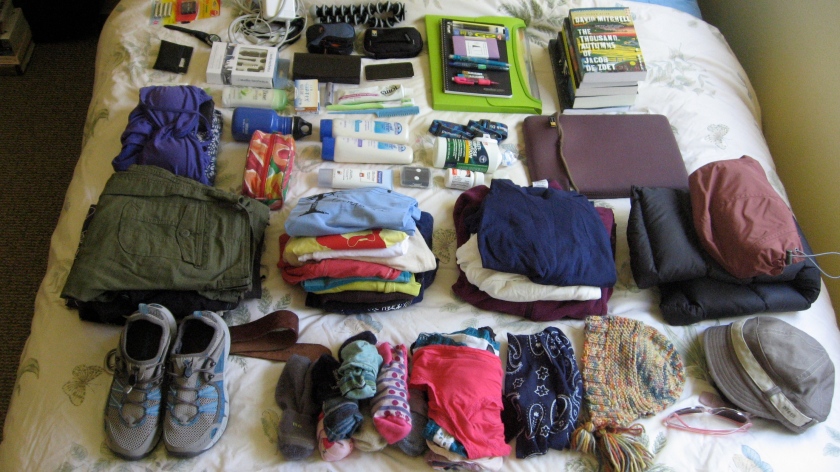Tomorrow I’m flying to Hawaii where I’ll join the Algalita Marine Research Foundation’s North Pacific Survey, sailing from Honolulu to Vancouver conducting research on the Great Pacific Garbage Patch. Lots more details to follow, but you can meet the crew and read about research goals here.
As the first installment, I will not attempt to solve the problems of plastic pollution, but offer instead my answer to the question: What to pack for a three-week sailing expedition through multiple climate zones? This will be followed next week by how to make it all fit in a 50x40x26 centimeter storage box.
Highlights include: water shoes, dramamine, pen made from recycled bottle, 5 different modes of documentation (camera, video, audio, laptop, notebooks), sea bands (will they work?), board shorts from when skater clothes were cool in high school, headlamp (for night watch???), comm department t-shirt, Marx t-shirt, lots and lots of sunscreen.
And, after months of deliberation (seriously), the book list:

Moby Dick is secreted away on my ipod, so as to avoid embarrassing photo-cliche opportunities.
Tah-dah!


